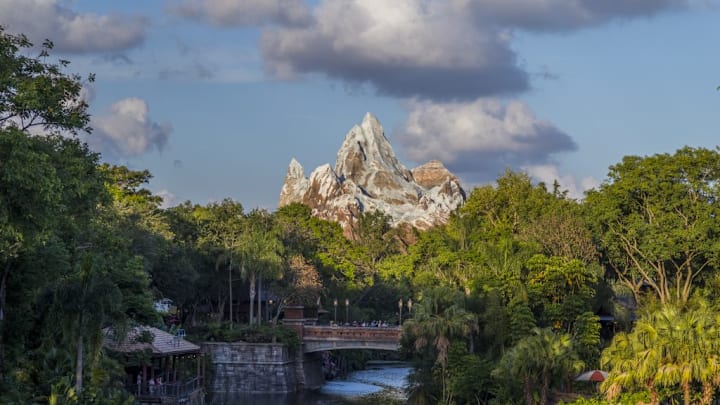Much has been made of how Disney Imagineering isn't as fun as it once was. There's an emphasis on existing popular IP, not original rides, often losing some spark to them. But one thing that's notable is the lost art of what was once one of the best parts of Imagineering: Crafting a backstory for some top attractions.
It wasn't always that way as the early Disney rides just adapted some movies like Peter Pan or Snow White. Even as Disney began to push some bigger attractions like the Matterhorn or the Submarine Voyage, they didn't do much in the way of stories.
The first one to change that was the Haunted Mansion. Walt had put out the talk of how he was concerned about all the classic old mansions being torn down for new suburbs. His main concern was what would happen to all the ghosts haunting them, so he put together a home for them. He even had signs before the Mansion when it was being constructed on "We are accepting applications" from spirits.
That faded a bit when Walt passed away, but it made a comeback when Big Thunder Mountain was created. It's not mentioned much, but there is a backstory that the mountain was supposedly on Native American lands, and when miners began setting up shop for the gold, it led to a curse hitting the realm. That's why the town at the end appears abandoned, and the "Thunder" of the title is the ancient spirit causing tunnel cave-ins and more.
That was a fun turn and would become used by Disney down the road.
The heydey of Imagineering backstories
The late 1980s and early '90s were fantastic for Imagineers crafting backstories for attractions. The first big example was Typhoon Lagoon, with the story of a massive storm hitting an island village and causing damage that led to so many water slides and other side attractions.
Pleasure Island had an expansive backstory in how explorer Merriweather Adam Pleasure founded the place to be warehouses for his business and various items he acquired in his global travels. When he was lost at sea, his sons ran the business into the ground until Disney found the area to rebuild it. That led to the touches of how the clubs were based on "warehouses" and the beloved Adventurers Club having it always be 1937 with a great humor to it.
It wasn't just the rides as Disney crafted an elaborate history for the Port Orleans resort, claiming it and Dixie Landings (now Riverside) were part of a centuries-old tale on the development of the New Orleans area with businesses and more. Many guests have no idea this backstory even existed but added to the fun stay.
Perhaps Disney's most inventive backstory was Blizzard Beach. It was truly offbeat with the tale of a freak winter storm dropping a ton of snow on Disney World property and the creation of Florida's first ski resort. But it sold the park nicely and showed how much the Imagineers cared for a guest feeling the story of a ride even before they entered it.
The downfall of good backstories
Sadly, just as Imagineering seems to have hit a bit of a slump, so has the magic of backstories. One of the last big attempts was in 2006, with Disney creating a nice mythology about Expedition Everest and the Yeti told in the waiting area. But, after that, things became overwhelmed with IP rides based on Marvel and other properties and lacked the spark of the past.
There have been attempts like Disney Springs having a story much like Pleasure Island of a settler founding a town around its springs. The upcoming Tiana's Bayou Adventure has already promoted the story of Tiana searching for the right ingredients for her restaurant and mixing it with the old Splash Mountain attraction.
But something is missing in some Disney rides in how much care the Imagineers took crafting the right backstories for them. It's not that it's totally dead, as Disney Seas can offer a lot of great ones for their rides. But for the U.S. Disney parkgoers, Disney seems okay with relying on IP like Marvel on Cosmic Rewind and other rides rather than creating stories of their own.
It's easy to put the blame on Disney management cutting costs but it also seems a new wave of Imagineers just don't have the same spirit for inventive tales as before. It doesn't help that having to work on stuff from Star Wars or Marvel holds back on the potential for better tales that sell the experience for guests.
That's a shame because creating that backstory is often the key to what makes an attraction so wonderful. It's why the Haunted Mansion still resonates, the tale of these wayward ghosts coming together. Or why you can feel some history in older attractions. True, not every ride needs a story (Jungle Cruise works just as a simple boat trip, not an adventure company), but creating a story shows the Imagineers intended this not just as a ride but an experience.
There's still potential for this to come back, as Disney has proven they can still make top-level rides. However, the reliance on IP stuff more than original ideas does limit that a bit. It's too bad, as a backstory for a Disney attraction is often what separates the good rides from the classics people love.
